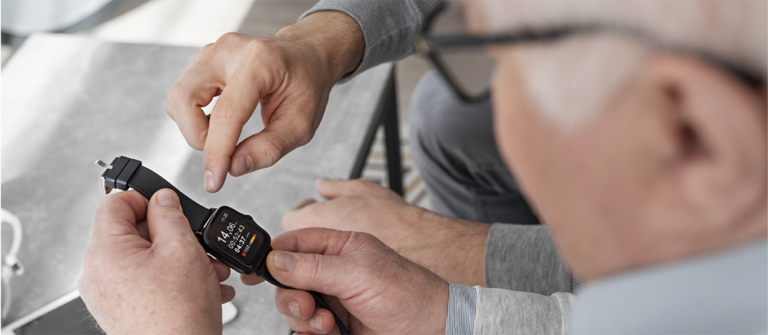
As the global population ages, providing comprehensive care to older adults becomes increasingly daunting. The United Nations predicts a surge in the elderly population, with those aged 65 and over expected to grow from 727 million in 2020 to over 1.5 billion by 2050. This demographic shift presents significant challenges in healthcare, daily care, and emotional support for older people—particularly those living with chronic conditions or disabilities. Traditional caregiving methods are becoming stretched beyond capacity, necessitating innovative solutions to bridge the gap.
Enter the world of robotic assistance—a revolutionary approach that promises to transform elderly care. With their ability to provide continuous, efficient, and tailored care, robots are poised to become an integral part of solving the caregiving crisis. These technologies offer practical support and bring new dimensions of companionship and safety that are vital for the well-being of the elderly.
The Rise of Elderly-Care Robots
The development of elderly-care robots has accelerated rapidly, driven by technological advancements and an urgent need for effective caregiving solutions. These robots are not just mechanical aids; they are equipped with sophisticated sensors and AI-driven capabilities that allow them to interact with their environment and the people they are designed to assist. From mobile units that help with daily tasks to stationary systems that provide medical monitoring, the scope of these robots’ capabilities is continually expanding.
Key innovations have emerged from recent studies and practical applications. For example, robots are now being designed with integrated sensory and motor functions that enable them to perform complex tasks such as dispensing medication, aiding in mobility, or monitoring physiological parameters.
Social interaction capabilities are also being enhanced with robots like PARO, the therapeutic seal, which have been shown to reduce stress and promote emotional well-being among elderly users. These robots don’t just perform tasks; they interact, learn, and adapt to the needs of the individuals they serve.
Benefits of Robotic Assistance in Elderly Care
Enhancing Daily Independence
Robots are increasingly seen as vital in supporting the daily independence of elderly individuals. They assist with mobility, help manage medications, and can perform chores like cleaning, which may become challenging as physical abilities wane.
Emotional and Social Interaction
Emotionally intelligent robots such as PARO provide companionship in ways that are profoundly impacting elderly care. PARO and similar robots use tactile feedback and responsive behaviors to engage users, helping to alleviate feelings of loneliness and isolation—a common issue among older people. The interaction with these robots has been clinically shown to improve mood and social interaction among seniors, especially those with conditions like dementia.
Safety Enhancements
Safety is paramount in elderly care, particularly in preventing falls or managing emergencies. Robots are being developed to address these safety concerns effectively. For example, fall detection robots can monitor an individual’s stability and send alerts if a fall is detected, ensuring that timely help is provided. Additionally, robots can navigate homes to monitor for risks, such as gas leaks or fires, adding an extra layer of security for elderly individuals living alone.
Integrating robots into elderly care offers a promising future where technology and human needs meet harmoniously. As these tools evolve, they will continue to enhance the quality of life for older adults, offering dignity, independence, and safety. The journey of integrating robotics into everyday care is just beginning, but its potential to revolutionize the field is undeniable. By embracing these technologies, we can ensure a safer, more fulfilling future for our aging population.
Technological Advances and Their Impact
The efficacy of elderly-care robots is mainly due to groundbreaking advancements in artificial intelligence (AI), machine learning, and sensor technology. AI and machine learning enable these robots to understand and predict the needs of their users, adapting their behavior in complex ways that mimic human caregiving. For instance, advanced sensors allow robots to detect environmental variables and physical movements, enabling proactive responses to potential hazards or the individual’s needs.
Case Studies and Examples
- Robotic Nursing Beds: These specialized beds are designed to significantly reduce the physical strain on human caregivers and enhance patient comfort through automated adjustments. An example from Japan is the Paramount Bed, which has features that help turn and lift patients. These beds integrate sensors that monitor sleep patterns and automatically adjust positioning to prevent bedsores and enhance the patient’s overall comfort.
- Rehabilitation Robots: These robots are pivotal in supporting physical therapy and muscle rehabilitation. They are designed to adapt their assistance based on real-time feedback and the patient’s progress. A prime example is the Lokomat, a robotic walking aid that supports body weight and provides automated movement guidance. This technology is particularly beneficial in helping individuals regain mobility after injuries or neurological incidents. The Lokomat enhances the effectiveness of rehabilitation efforts by ensuring consistent and precise support during therapy sessions.
Ethical and Psychological Considerations
The integration of robots into elderly care raises important ethical and psychological considerations. Acceptance by older people varies widely; while some may see these devices as invaluable aids, others might view them as intrusive or even as replacements for human contact. Balancing technological intervention with a personal touch is crucial, ensuring that robots are seen as helpers rather than replacements for human caregivers.
Privacy concerns are paramount as these robots often collect personal health data to function optimally. Ensuring data security and privacy by regulations like GDPR is essential. Moreover, the design and deployment of these technologies must be handled with sensitivity to avoid feelings of surveillance or loss of autonomy among elderly users.
Challenges and Future Directions
Despite the promising advancements, several challenges impede the widespread adoption of robotic assistance in elderly care:
- Technological Limitations: Current robots may still lack human caregivers’ nuanced understanding and flexibility. They can struggle with unstructured environments or unpredictable scenarios.
- High Costs: Development, maintenance, and updating of robotic systems can be expensive, limiting accessibility for many elderly individuals and care institutions.
- Integration Challenges: Meshing robotic systems with existing healthcare protocols and systems requires thoughtful integration strategies and caregiver training.
Future Trends Looking ahead, the future of robotic assistance in elderly care is vibrant with potential innovations:
- Enhanced Interactivity: Robots will likely become more interactive, with advancements in natural language processing and emotional intelligence, making them more engaging and capable of handling complex social interactions.
- Greater Customization: As AI becomes more sophisticated, expect to see robots more tailored to the individual’s preferences, medical needs, and living environments.
- Collaborative Robotics: Integration of robots as part of a broader care team, where they work in tandem with human caregivers, is a promising direction that could blend the efficiency of robotic care with the warmth and empathy of human interaction.
As these technologies evolve, they must be developed responsibly, focusing on enhancing the quality of life for older people. By addressing these challenges and trends, robotic assistance can significantly transform elderly care, providing a supportive, interactive, and safe environment for the aging population.
Enhancing Elderly Care with Robotic Assistance and Medical Alert Technologies
The integration of robotics and medical alert technologies into elderly care marks a transformative step in managing the challenges associated with aging and healthcare. As explored in this article, these innovative technologies extend beyond mere functional support—they provide crucial safety measures, companionship, and daily living assistance, thereby significantly enhancing the quality of life for older adults.
Examples like the Lokomat and advanced robotic nursing beds highlight how these technologies positively impact lives by supporting human caregivers and improving patient outcomes.
However, fully integrating robotics and medical alert systems into elderly care is a complex, ongoing journey. While these technologies promise a revolutionary shift in elderly care practices, their adoption hinges on overcoming challenges related to costs, technological advancements, and societal acceptance. As we look to the future, the focus should be on crafting solutions that are not only technologically sophisticated but also culturally attuned and ethically grounded, ensuring they align with the diverse needs and preferences of the elderly population.
Ultimately, our goal is to create a synergistic environment where technology complements human caregiving efforts, augmenting rather than replacing the human touch. By doing so, we can forge a future where elderly individuals receive compassionate, efficient, and effective care backed by the best technology offers. With continued innovation and careful integration of robotic aids and medical alert systems, we are set to continue revolutionizing elderly care, making it more sustainable, responsive, and humane.









